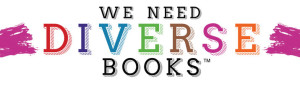The Importance of the Design Process
 Last Saturday I hosted an online panel discussion called “Designing Women” with a group of women who work in web design, web development, user experience and software design. They talked about their careers and the role gender plays in their work. While the purpose of the discussion was to highlight gender parity in STEM industries, most of the conversation really became more about the importance of design thinking.
Last Saturday I hosted an online panel discussion called “Designing Women” with a group of women who work in web design, web development, user experience and software design. They talked about their careers and the role gender plays in their work. While the purpose of the discussion was to highlight gender parity in STEM industries, most of the conversation really became more about the importance of design thinking.
I took some notes during the discussion and created a list below of ideas that all the panelists agreed with regarding this issue and how it intertwines with diversity and STEM.
- Having Empathy – Understanding user experience is a big part of what design professionals do in their work. We have to be good at observing the habits of others. This is why it is important to have design professionals from diverse backgrounds working on projects who can bring different and empathetic perspectives to the table.
- Collaborative Use of Many Disciplines – It is a common misconception that all STEM professionals are just geeky techies with no creativity. Designers that work in graphics, interactive and UX bring a mix of creativity and tech savvy to prototype discussions.
- Innovation – Because technology is always changing, design professionals are usually the ones on the cutting edge of new ways of doing things.
- Aesthetics – While content is important, visual appeal is what draws users in. For example, Apple products are known more for their aesthetic appeal than their technicalities, compared to other electronics. Design professionals know how important it is to make sure that their work is presented in a way that is appealing.
I thought this was a great discussion and thanks to all the panelists who participated. I am thinking of doing another webinar just on the design process, possibly next summer. I think this is a really important topic that needs more dedicated time to focus on the entire design thinking process. We started replaying “Designing Women” on GWA’s Classroom. If you are interested in collaborating in this summer discussion, please contact me.


